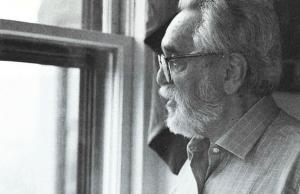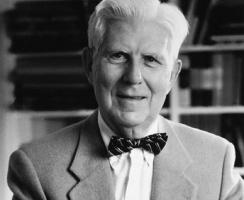Frida Kahlo: biography of this Mexican painter
Immortalized by Nickolas Muray, the Hungarian photographer who was her lover and friend for many years, the image of the Mexican painter Frida Kahlo (1907-1954) is not difficult to evoke. He merchandising of our era of consumerism she has captured her face on bags, t-shirts, mugs and jewelry, and there are many people who proudly display her effigy. But do we know who exactly Frida Kahlo was?
Her sweet brunette beauty and the colorful Mexican costumes she dressed in made her very popular in the United States. United, when she moved to live in California first and then in New York in the company of her husband, Diego. Rivera. However, very soon that young girl with a vulnerable appearance was going to become a star in her own right. Frida Kahlo would be, thanks to her talent, one of the greatest artists of the 20th century.
If you want to know her story, not always flattering, she continues reading this Frida Kahlo's biography. The painter's life is and will be a model of resilience and the fight against adversity.
Brief biography of Frida Kahlo, the great Mexican artist
In her last painting, painted a few days before her death, Frida Kahlo writes: “Long live life.” The phrase, forceful and explicit, gave its name to her work, a still life composed exclusively of watermelons. This is how a woman expressed herself who, even though she was consumed and close to her final departure, still found the strength to feel grateful for the miracle of existence. An existence that was not, in the least, kind to her. Let's see it.
Her youth: marked by misfortune
Frida Kahlo's work cannot be separated from the physical and emotional pain that she suffered from a very young age.. By the end of her life, she had undergone surgery on more than twenty occasions, and had suffered three miscarriages.
The great Mexican artist was born in July 1907 in Coyoacán, a town located on the outskirts of Mexico City. Her father, Wilhelm Kahlo (who would later change his name to the more Hispanic William) was born in Germany, and was a photographer. Frida's mother, the Mexican Matilde Calderón, had not been his first wife, since the previous one had died during her third childbirth. With his second wife, Guillermo had, in addition to Frida, Matilde (b. 1899), Adriana (b. 1902), Guillermo (born in 1906 and who died a few days later) and Cristina (b. 1908). With the latter, Frida was always very close, so her betrayal, which we will talk about later, was very hard for the artist.
Frida's first misfortune occurs at the young age of six, when she is diagnosed with polio, which permanently deforms her right leg. Much later, when she is already an attractive young woman of eighteen, She suffers the very serious accident that will mark her existence.. On September 17, 1925, a tram hits the bus in which she was traveling with her boyfriend, Alejandro Gómez Arias. A piece of iron sticks into her abdomen, and Frida must undergo urgent surgery. Her multiple injuries are so severe that doctors don't know if she will survive. However, against all odds, the petite young girl keeps going. Of course, the consequences will last her entire life and, in addition, Alejandro abandons her, supposedly feeling incapable of caring for a “crippled woman.”
- Related article: "Art History: what is it and what does this discipline study?"
Art and Diego Rivera, Diego Rivera and art
On one occasion, Frida commented that she loved Diego more than his life. In light of the facts, it appears that this was the case. Above her art was always her husband, the painter Diego Rivera., whom she met through the photographer Tina Modotti and her husband, the Cuban communist Julio Antonio Mella. Diego had strong communist convictions, which Frida also shared and which became more acute during this period.
Her initial friendship with Rivera (whom she consulted about her own talent and whether she believed she could become a great painter) soon turned into romance. The couple married civilly in 1929, much to the chagrin of Frida's mother, who was a fervent Catholic. Matilde also disapproved of the age difference between the spouses, since Frida was a girl of twenty-two years old and Diego was over forty.
The first year of marriage was happy, but disagreements soon arrived, the source of which was, mainly, Diego's continuous infidelities. The final blow was his romance with Frida's little sister, Cristina. The artist felt unable to bear it. Even so, she continued with Diego and they perpetrated a union of codependency that led them to divorce in 1940 and remarry a year later.
- You may be interested: "What are the 7 Fine Arts? A summary of its characteristics"
Capturing suffering in art
Frida had begun to create her work during the very hard and long convalescence from the accident of 1925. Forced to stay in bed for months, she began to paint, with the help of a mirror. From this time is her first self-portrait, made in 1926 and which she gave to her boyfriend, Alejandro. However, he had already begun to put distance between him and the “cripple”, it is not known whether by his own will or by pressure from her parents, who did not want her son to marry Frida.
The self-portrait is precisely the genre that the artist most cultivated, possibly the result of the long hours she spent in the company of herself. Frida learned to read inside her and began to capture her suffering in her paintings. Her work is largely inspired by Mexican votive offerings, testifying, once again, to her passion for the culture of her country.

Her most famous self-portrait contains, paradoxically, two people: it is the famous The two Fridas, painted in 1939. The canvas shows an early Frida dressed in white, usually interpreted as the naive Frida before her accident and her stormy relationship with Rivera. The second Frida is dressed in a darker colored dress (Frida disillusioned and disappointed); Both are connected by an artery that carries blood to the two hearts. However, the scissors carried by the first Frida (on whose white dress her spilled blood stands out) They are an echo of the traumas experienced: the accident, the loss of pregnancies, the infidelities of the husband…
Throughout her life, Frida Kahlo transferred the pain of her heart to her paintings. In Henry Ford Hospital either The bed flyingShe, the artist, paints herself naked, lying in a hospital bed (which she, unfortunately, knew so well). Frida's complete nudity denotes her vulnerability; Around her, different red threads connect her with various elements in which the great sufferings of her life can be read; among them, a fetus (in reference to abortions) and a pelvis (its serious fracture resulting from the accident).
The last terrible years
In the 1940s, Frida's fame is international. She is considered one of the best artists of her time, and she begins to exhibit profusely. In Paris, she is helped in this goal by personalities such as Marcel Duchamp or André Breton, the latter truly amazed by the Mexican's talent. She, however, She did not have much sympathy for the Paris surrealist group., as she expressed in one of her letters to Nickolas Muray, and she never considered herself part of the movement.
It is in the United States where Frida's fame was especially notable, and that despite her open connection with Trotskyism. Frida and Diego sympathize with this ideology and come to host the leader, León Trotsky (1879-1940), in his house in Coyoacán, known as The blue House. After the attack that ended Trotsky's life (perpetrated by the communist Ramón Mercader), Frida was interrogated for endless hours and her house was raided, looking for evidence.
The last years of Frida Kahlo's life are a real hell. Her health deteriorates by the minute; In 1953, part of her leg had to be amputated due to rampant gangrene. One of her strong supporters is her husband again, Diego Rivera, with whom she remains very close despite his dalliances. The pain is so great that Frida tries to commit suicide. Finally, She died on July 13, 1954, at the age of forty-seven..
Her death caused rivers of ink to flow and remains a mystery today. Did her death have natural causes, related to her state of health? Or was it perhaps the suicide attempt definitive?
Her husband, Diego Rivera, succumbed emotionally after her departure, leaving only three years after her. A controversial relationship full of ups and downs, but one that lasted until the end.



